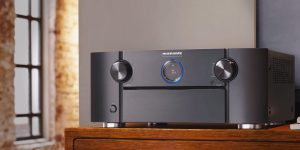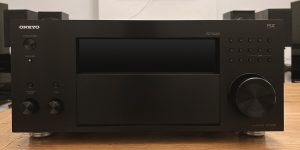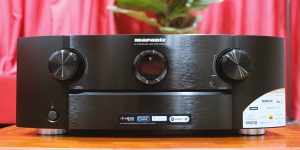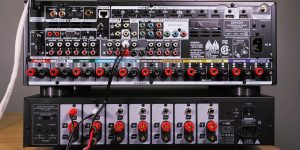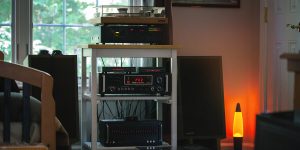These technological marvels are the driving force behind immersive audio experiences, elevating your movie nights, gaming sessions, and music listening to a level that was once reserved for high-end theaters. With the capability to decode, amplify, and distribute audio across multiple channels, 9.2 receivers ensure that every nuance is delivered with clarity and breathtaking dynamics.
In this review, I will explore the top contenders in the 9-channel receiver category, rating their features, performance, and the unique qualities that set them apart. So, before I name the best 9.2 receivers, read a brief explanation of this configuration.
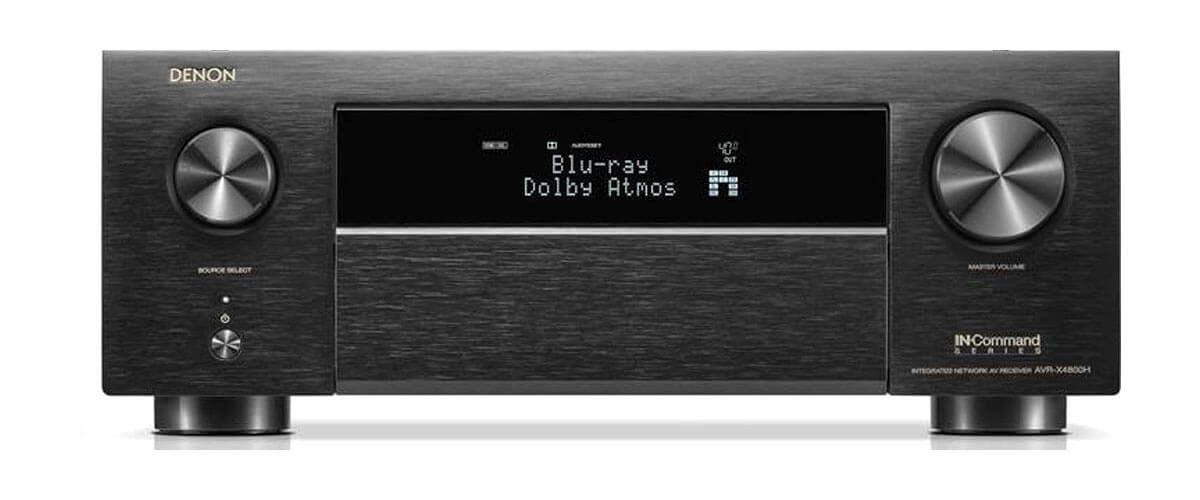
9.2 AV receivers comparison table
| Name | Channels | Power output | HDMI in/out | Bluetooth/Wi-Fi | Review |
|---|---|---|---|---|---|
| Denon AVR-X4800H best overall | 9.4 | 125W/8 Ohm, 165W/6 Ohm | 7/3 | yes/yes | Review |
| Onkyo TX-RZ50 budget | 9.2 | 120W/8 Ohms | 7/2 | yes/yes | Review |
| Marantz CINEMA 50 also great | 9.4 | 110W/8 Ohm, 150W/6 Ohm | 6/2 | yes/yes | Review |
| Pioneer Elite VSX-LX505 | 9.2 | 120W/8 Ohms, 140W/6 Ohms | 7/2 | yes/yes | Review |
Understanding the 9.2 setups
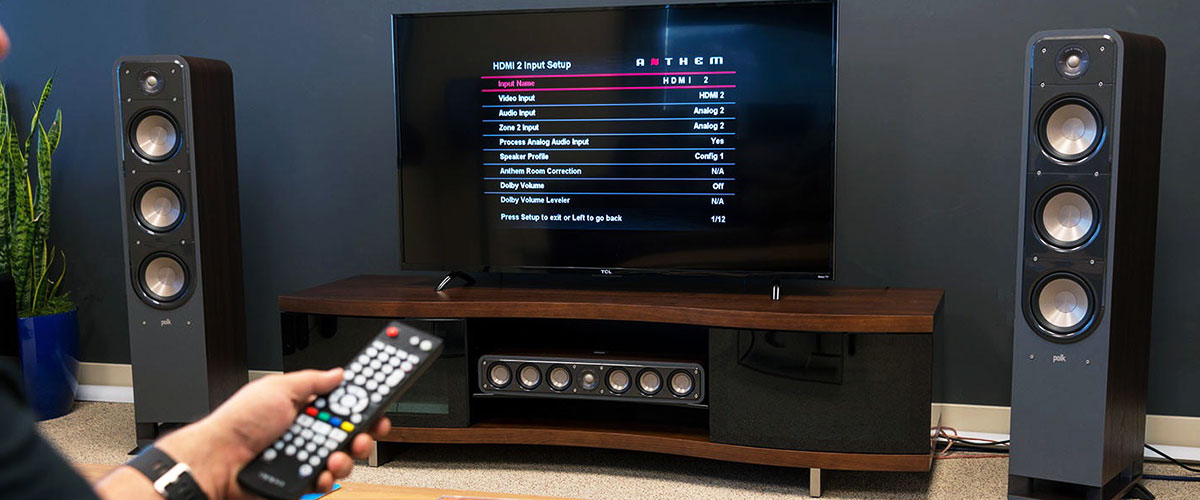
A 9.2 surround sound system is a high-end audio configuration that delivers an incredibly immersive and dynamic audio experience in your audio setup. The additional channels beyond the standard 5.1 or 7.1 configurations allow the viewer to get even more impressions from Dolby Atmos and DTS:X.
With 9 main audio channels, the system offers a wider soundstage, allowing you to hear audio from various directions and elevations. This means that you can experience not only the typical surround sound but also sound coming from above you, providing a three-dimensional audio experience.
A 9.2 AVR is ideal for dedicated home theaters and large living spaces, offering unparalleled audio quality for movie nights and music listening sessions. It is often paired with advanced room calibration and optimization systems to ensure that the audio is finely tuned to your specific room’s acoustics.
Advantages and disadvantages of 9.2 sound system
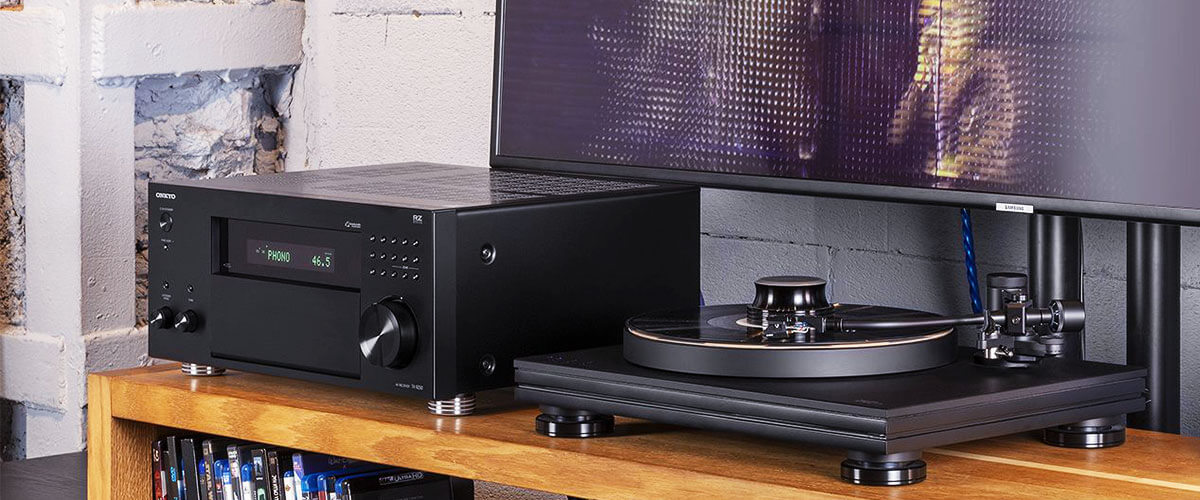
The best 9.2 receiver can handle a wide dynamic range, from the softest whispers to thundering explosions, without distortion. This ensures that audio remains clear and impactful, even at high volumes. It supports Dolby Atmos and DTS:X, ensuring compatibility with the latest audio technologies and content. With two subwoofers, a 9.2 system provides an enhanced bass response, delivering powerful and deep low-frequency effects.
However, even such advanced models have some drawbacks to consider. High-quality audio equipment, additional speakers, and advanced receivers can be expensive. Setting up a surround sound system with 9 channels can be more complex and time-consuming than simpler configurations. Proper calibration and speaker setup are important in this case for optimal performance. Not all audio and video content is produced in formats that fully utilize a 9.2 system. While it can enhance certain content, the benefits may not be realized with every source.
Best 9.2 AV receivers reviews
Denon AVR-X4800H – best overall

As always, we start with the winner in today’s review, Denon AVR-X4800H. The first reason it’s on top is that this is the only really powerful model among other competitors – 125W per channel (8 Ohms, 20-20kHz, THD 0.05%). I would also like to draw your attention to the fact that with its low THD at high volume levels, the sound is clear and free of interference or distortion.
The device features discrete high-current amplifiers on all channels with the ability to drive low-impedance speakers and a monolithic amplifier layout. The X4800H uses an independent power amplifier board for each channel, which means less crosstalk and vibration. Another great feature of it is AL32 processing. This is Denon’s patented analog signal reproduction technology, which supports sampling rates up to 192 kHz and 32-bit extension. The technology completely suppresses the noise of digital-to-analog conversion to reproduce low-level signals with optimal clarity. You also have the option to go all the way to 11 channels, but to do this, you’ll need an external amplifier to drive the last two channels. Moreover, the receiver can control 4 subwoofers independently of each other instead of 2.
The unit supports a huge list of surround sound formats and technologies, including Dolby Atmos, DTS:X, 360 Reality Audio, as well as the usual virtual and upmixing technologies such as Dolby Surround, DTS Neural:X, Dolby Atmos Height Virtualization and DTS Virtual:X. We also get expanded IMAX support, as well as Auro-3D.
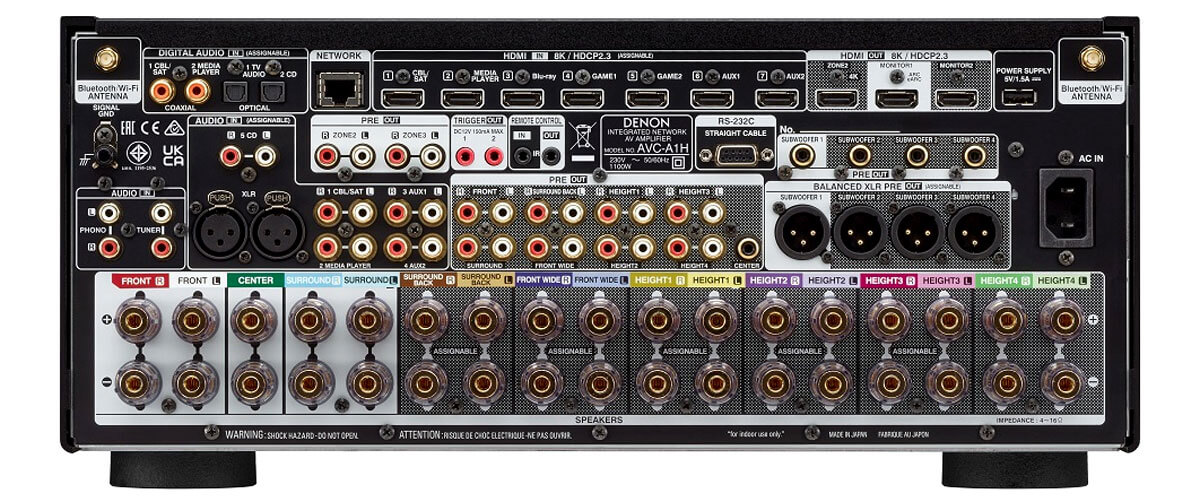
With such equipment, you get a very deep and expansive field of sound that extends beyond your speakers. I felt the sounds come from all directions and from any height. The two main channels did all the hard work without losing cohesion and stability, no matter how demanding the scene was. The device was perfect in all types of material, be it delicate, calm scenes, or action scenes. Whether it’s a front stage, surround precision or Atmos clarity, the X4800H has it all.
Video connections won’t upset you either. In terms of HDMI ports, it comes with 7 HDMI 2.1 ports that support all the old and new technologies, including 8K/60Hz and 4K/120Hz video pass-through with 40 Gbps bandwidth. However, those who find HDMI input on the front panel useful won’t find it here. AVR is packed with HDR10+, Dolby Vision, Dynamic HDR, 3D, eARC and HDMI-CEC. Moreover, this is the only receiver of today’s chart that provides 3 multi-room Zones.
In the X4800H, we find the Audyssey MultEQ XT32 version, which is the most comprehensive feature set but, unfortunately, not free. In particular, these are the highest-resolution filters for higher accuracy during calibration. It also comes with Dynamic Volume, Dynamic EQ, Audyssey LFC, and Audyssey sub EQ HT. This version of Audyssey can analyze up to 8 different listening positions using the included microphone and creates precise digital filters. Recently, there’s an option to purchase a license to Dirac Live for a more advanced setup.

Denon offers an AVR Remote app for this model, and it’s completely free. It allows you to control the device from your mobile through a nice visual interface. If you’re tired of the included remote control, this is a good and relevant free alternative I recommend to try.
It includes HEOS and Airplay 2, so you can stream online from Spotify, Deezer, TIDAL, and other services. There’s support for Amazon Alexa and Google Assistant, Apple’s Siri, and Josh.ai’s advanced automation system, making this receiver fully equipped.
The Denon AVR-X4800H is absolutely the best 9-channel receiver that can handle almost anything you ask of it. Denon has a winner on its hands, and you can’t go wrong with it, no matter how you use it.
Key specs
- Channels: 9.4.
- Output power: 125W/8 Ohm, 165W/6 Ohm.
- HDMI inputs/outputs: 7/3.
- Video functions: 8K/60Hz, 4K/120Hz, 4K/60Hz pass-through, video upconversion (up to 1080p and 8K) for analog and HDMI sources.
- Bluetooth/Wi-Fi: yes/yes.
- Streaming services: AirPlay2, Deezer, Tidal, Pandora, SiriusXM, Napster, SoundCloud, Amazon Music, Amazon Music HD, Mood mix.
- Supports: HDMI ARC, HDMI eARC, HDMI CEC, HDCP2.3, HDR10, HDR10+, Dolby Vision.
- Surround sound: Dolby TrueHD, Dolby Surround, Dolby Digital Plus, Dolby Atmos Height Virtualization, Dolby Atmos, DTS HD Master, DTS Neural:X, Auro-3D, IMAX Enhanced, Multichannel stereo.
Pros
- The most powerful receiver in the rating.
- It has AL32 processing that suppresses the noise of digital-to-analog conversion.
- Delivers a deep and expansive field of sound.
- Includes 3 Zones for multi-room service.
Cons
- The Audyssey MultEQ editing app is a paid application.
- No HDMI input on the front panel.
Onkyo TX-RZ50 – budget
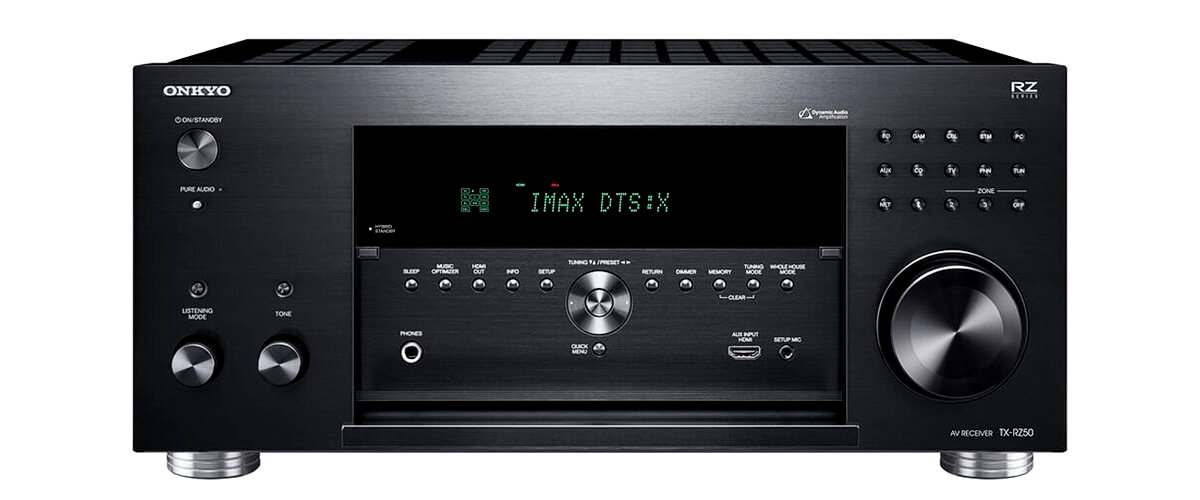
The next model is not far from my favorite, and according to its characteristics, it is a good competitor. The TX-RZ50 features up to 11.2 channel processing and pre-outs for 7.2.4 system layouts, making it an ideal choice for your premium home theater system, considering the adequate price. The power output is also good, giving 120W (8 Ohms, 20 Hz–20 kHz, 0.08% THD). I have to admit there’s a wide range of support for speaker impedance – from 4 to 16 Ohms.
The presence of connections will definitely please you because all the necessary features are here. The receiver offers 7 HDMI inputs (1 front) and 2 outputs (eARC and Sub/Zone 2).
HDMI 2.1 ports provide 8K/60Hz and 4K/120Hz, as well as HDR10+ and Dolby Vision.

Moving to surround sound formats, TX-RZ50 will also satisfy you with its abundance. Dolby Atmos, DTS:X, Dolby Atmos Height Virtualizer and DTS Neural:X, IMAX mode for IMAX Enhanced content. Moreover, it has THX listening modes for movies, music, and games, which guarantees the same reference volume as a commercial theater in rooms where the screen-to-seat distance is about 12 ft.
RZ50 works with Sonos, for which you will require an additional port. You also can use it with Alexa or Hey Google. Despite that, there are built-in Chromecast (you may add Chromecast-enabled speakers) and Apple AirPlay 2 to use Siri voice control. In addition, you can use DTS Play-Fi to ensure multi-room audio via the Onkyo Music Control app.

It’s up to you whether to choose Dirac Live room correction or AccuEQ with RZ50. But considering my test of this receiver, running through a quick setup of Dirac Live, in 10 minutes, you can get greater soundstage, overall tone, and bass integration than you could expect. However, in my case, I periodically had to unplug the unit and then reconnect it because of a software glitch. I also need to warn you that this AVR doesn’t include a hard copy manual.
All in all, the Onkyo TX-RZ50 is the best budget 9.2 receiver. Setting this unit won’t cause you much trouble. The receiver has plenty of power with a full set of pre-outs. This is the perfect receiver that you can upgrade your entire theater around for years to come.
Key specs
- Channels: 9.2.
- Output power: 120W/8 Ohms.
- HDMI inputs/outputs: 7/2.
- Video functions: 4K/120Hz, 8K/60Hz pass-through, upscaling to 8K.
- Bluetooth/Wi-Fi: yes/yes.
- Streaming services: AirPlay2, Spotify, Deezer, Tidal, Pandora, SiriusXM, Napster, SoundCloud, Amazon Music HD, TuneIn.
- Supports: HDMI ARC, HDMI eARC, HDMI CEC, HDCP2.3, HLG, HDR10, HDR10+, Dolby Vision.
- Surround sound: Dolby TrueHD, Dolby Atmos Height Virtualizer, Dolby Atmos, Dolby Surround, DTS HD Master, DTS:X, DTS Neural:X, IMAX Enhanced.
Pros
- Wire range of speaker impedance: 4-16 Ohms.
- THX certification guarantees the same reference volume as a commercial theater.
- This model has almost identical functionality to the others in my review but for a smaller budget.
Cons
- Requires additional port for Sonos.
- A hard copy manual is not included.
- There were some minor software glitches during setup.
Marantz CINEMA 50 – also great

And how can this review be without Marantz? Despite being in the same price segment as Denon AVR-X4800H, it has less power among comparable models – 110W (8 Ohms, 20 Hz – 20 kHz, 0.08% THD). Nevertheless, the unit can be configured as a 5.1.4 Dolby Atmos system or 7.1.2. The Cinema 50 uses the HDAM amplification circuit, which is widely acknowledged to produce the signature warm Marantz sound. By the way, during testing, the sound was really excellent.
All of the necessary connections are located on the back. 6 HDMI inputs and 3 outputs (with eARC/ARC support for an additional monitor and Zone 2). However, there is no HDMI input on the front panel. All inputs support 4K/120Hz and 8K/60Hz as standard, upscaling feature – 1080P/4K to 8K, and HDR processing that extends to Dolby Vision and HDR10+. Unfortunately, many users claim they face HDMI issues, and for a receiver at this price, this is a bit frustrating. However, during my tests (about a week), I did not notice any obvious problems in this aspect.

Wireless connectivity is pretty much the same as other models on the rating, including Bluetooth, Wi-Fi, and AirPlay 2. Streaming and multi-room services are provided by the HEOS platform, with the ability to use Zone 2.
Surround sound formats are represented by Dolby Atmos, DTS:X, Dolby Atmos Height Virtualization and DTS Virtual:X, IMAX Enhanced, Auro-3D, and 360 Reality Audio. This is an awesome collection to enjoy movie nights, however, I found the bass is dramatically reduced. I had to turn the bass settings way up and add a 3rd sub.
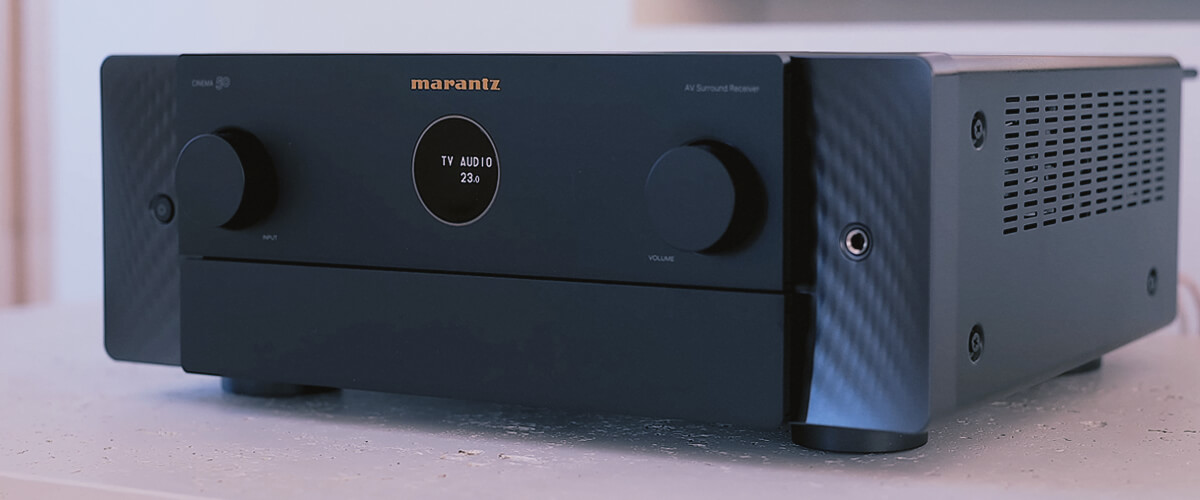
Room calibration on Cinema 50 can be done using Audyssey MultEQ XT32 with Dynamic Volume and LFC. You can measure up to 8 positions in a room, the idea is to cover the main viewing area. If you want to dig deeper, Cinema 50 works with Audyssey’s Windows PC software suite, MultEQ X, but requires purchasing a license to use it. The amplifier can be adjusted with Dirac Live but I think Audyssey MultEQ XT32 will be enough for most users. I also want to admit the Marantz App makes it easy to control the equipment in the rear of the theater system.
Marantz CINEMA 50 is ideally equipped with future-proof connections. It’s a good choice if you would like to upgrade your older receiver that lacks surround sound and video formats. Additionally, this model rejects Marantz’s classic style in favor of a new, contemporary look.
Key specs
- Channels: 9.4.
- Output power: 110W/8 Ohm, 150W/6 Ohm.
- HDMI inputs/outputs: 6/2.
- Video functions: 8K/60Hz, 4K/60Hz, 4K/120Hz, HDMI upscaling up to 8K.
- Bluetooth/Wi-Fi: yes/yes.
- Streaming services: AirPlay 2, Spotify, TuneIn, Deezer, Tidal, Netflix, Amazon Prime.
- Supports: HDMI ARC, HDMI eARC, HDMI CEC, HDCP2.3, HDR10+, Dolby Vision.
- Surround sound: DTS HD Master, DTS:X, DTS Neural:X, DTS Virtual:X, Dolby Atmos, Dolby TrueHD, Dolby Height Virtualization, Dolby Surround, MAX Enhanced, Auro-3D, 360 Reality Audio, MPEG H.
Pros
- Has an HDAM amplification circuit to provide a warm sound.
- Marantz App provides easy control over the equipment.
- Transmitting 4K video to Zone 2.
Cons
- Has the weakest power output on the list.
- Some users have complained about HDMI issues (probably it depends on the cables used), but I haven’t had such situations.
- Lacks the bass intensity.
Pioneer Elite VSX-LX505
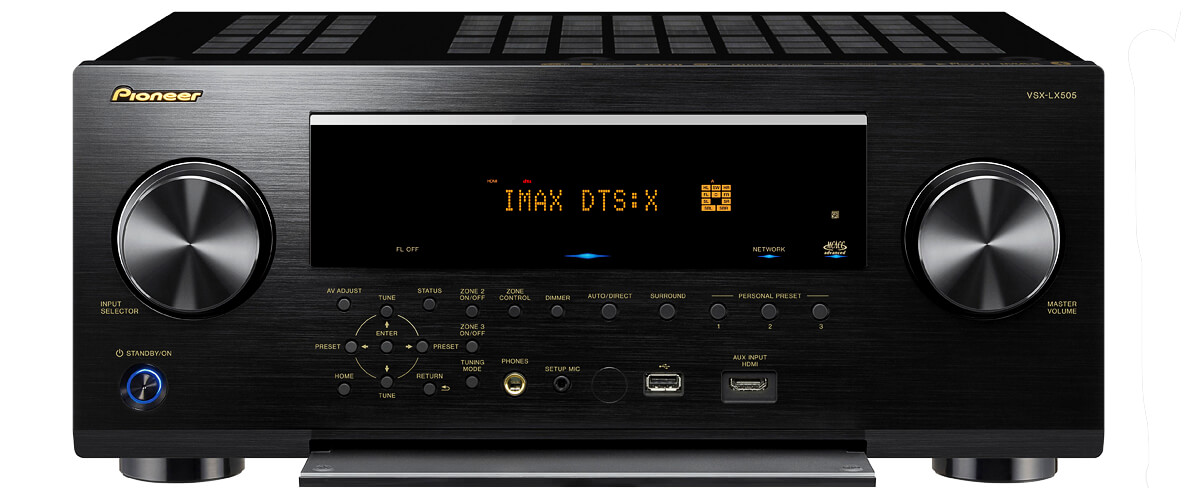
VSX-LX505 finishes my review, which belongs to the premium series of Pioneer. The models of this series have an improved design compared to the basic models of the brand. The device has a 9.2 configuration with a power output of 120W (8 Ohms, 20 Hz-20kHz, 0.08% THD) and is equipped with amplifiers using Direct Power technology. They develop high output power and provide accurate and balanced sound with minimal distortion. The model uses a quad-core Cirrus Logic, working in conjunction with DSP Aureus, which is more advanced than on 7.1 units.
The AV receiver has decoders for most of the popular surround sound formats, including Dolby Atmos, DTS:X, and IMAX Enhanced. However, among them, you won’t find DTS Virtual:X. In order to increase the accuracy of the formation of a three-dimensional sound picture depending on the reflective properties of the ceiling when using upward-facing Atmos acoustics, the Reflex Optimizer system is provided.
While operating the LX505 in Direct mode, streaming full-range audio without a subwoofer and placing the highest requirements on the primary left- and right-channel amps, there was not the slightest indication of softness or weakness on the bottom.

The Pioneer VSX-LX505 is equipped with 7 HDMI inputs (one of which is located on the front panel) and 2 outputs. So you get HDMI 2.1 with 8K, supporting HDR10+, Dolby Vision, and Ultra HD upscaling – 4K to 8K, 1080p to 8K/4K.
The device provides the widest streaming functionality. It is equipped with support for multi-room systems, DTS Play-Fi with Pioneer Music Control App, FlareConnect, Chromecast, and AirPlay 2. It is also possible to play music from popular online services or network drives, as well as from USB flash drives. LX505 works with Sonos, supporting multiple Sonos Connect control and Volume Pass-Through mode.
It integrates an exclusive MCACC system together with Dirac Live room correction. Despite being the flagship model in Pioneer’s AVR series, the LX505 includes the Advanced edition. This version differs from the Pro primarily in that it does not have dual subwoofer outputs and EQ measurement and compensates for distance to an incredibly precise 1 millimeter. When MCACC was activated, the receiver made the typical noises but Pioneer, in contrast to other systems, offers an onscreen panel to let you know what’s going on.
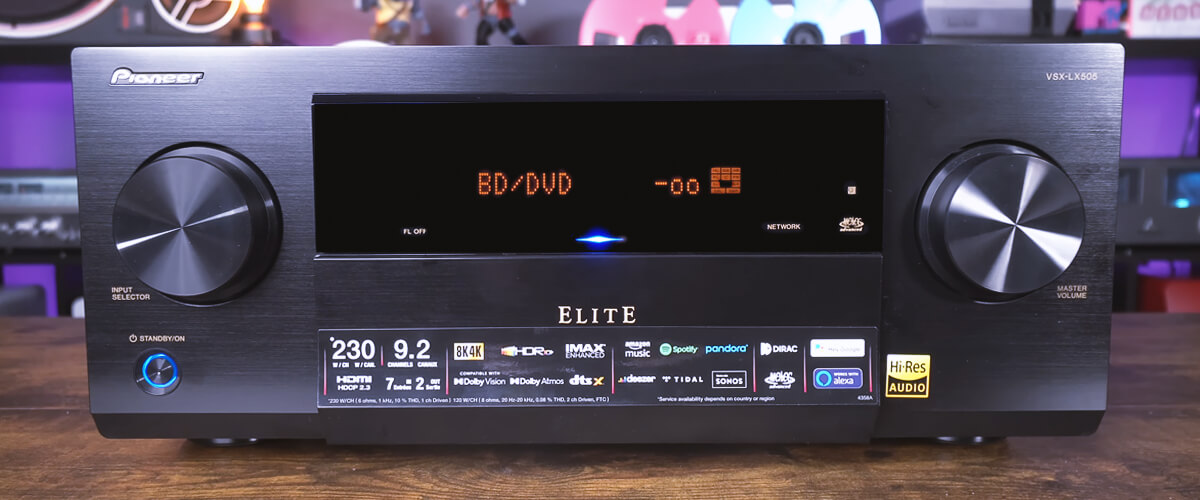
There are a few things that might upset someone about the equipment. This is the only receiver on the list without Eco mode. What I also found unpleasant about it is the remote. A lot of consumers complain it stops working. You also can’t access some of the receiver’s features unless you get an app. Well, even though the Pioneer Remote app is free and a great alternative, such a physical remote is still very bad for equipment in this price category.
Considering the above, Pioneer VSX-LX505 is a worthy choice with all of the surround features, 8K capability, and app capabilities according to the price point. You will have to deal with its complex setup since the settings are not located in the same place, forcing you to go back and forth. But still, you get a good sound quality and adjustability.
Key specs
- Channels: 9.2.
- Output power: 120W/8 Ohms.
- HDMI inputs/outputs: 7/2.
- Video functions: 4K/120Hz, 8K/60Hz pass-through, upscaling to 8K.
- Bluetooth/Wi-Fi: yes/yes.
- Streaming service: AirPlay2, Spotify, Deezer, Tidal, Pandora, SiriusXM, Napster, SoundCloud, Amazon Music HD, TuneIn.
- Supports: HDMI ARC, HDMI eARC, HDMI CEC, HDCP2.3, HLG, HDR10, HDR10+, Dolby Vision.
- Surround sound: Dolby TrueHD, Dolby Digital Plus, Dolby Atmos, Dolby Atmos Height Virtualizer, Dolby Surround Upmixer, DTS HD Master, DTS:X, DTS Neural:X, IMAX Enhanced.
Pros
- Direct Power technology provides sound with minimal distortion.
- Uses a quad-core Cirrus Logic.
- Includes Reflex Optimizer to increase the accuracy of a three-dimensional sound.
Cons
- Doesn’t have DTS Virtual:X.
- No Eco mode.
- Remote control of a bad quality.

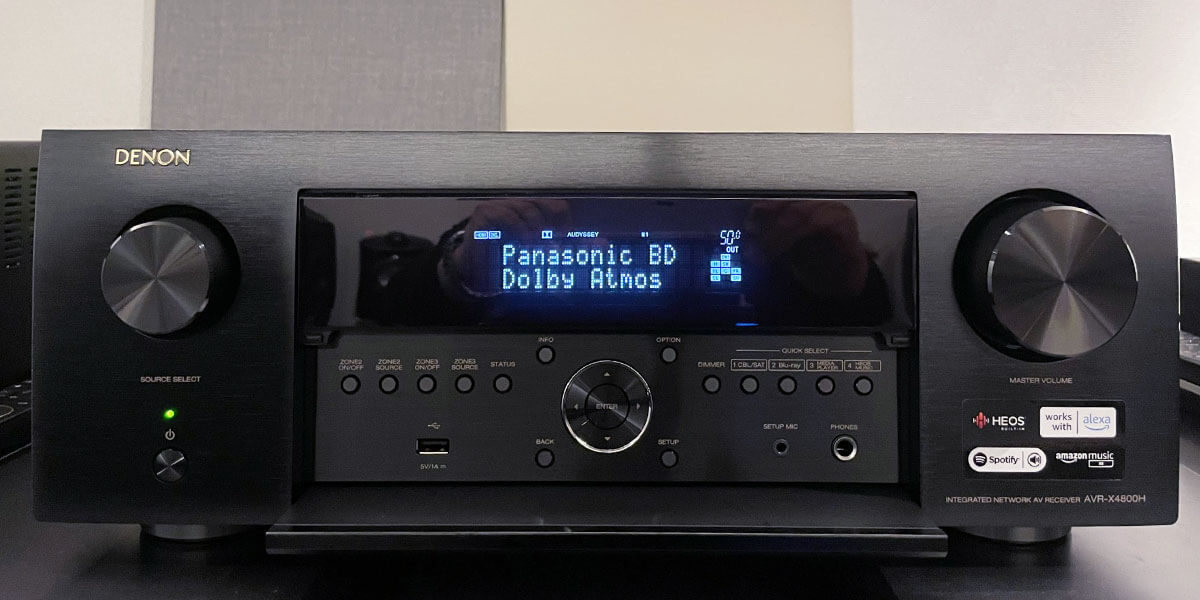


![Best 2-Channel Receiver [Expert Reviews and Buying Guide]](https://hometheaterology.com/wp-content/uploads/2023/11/best-2-channel-receiver-stereo-300x150.jpg)

